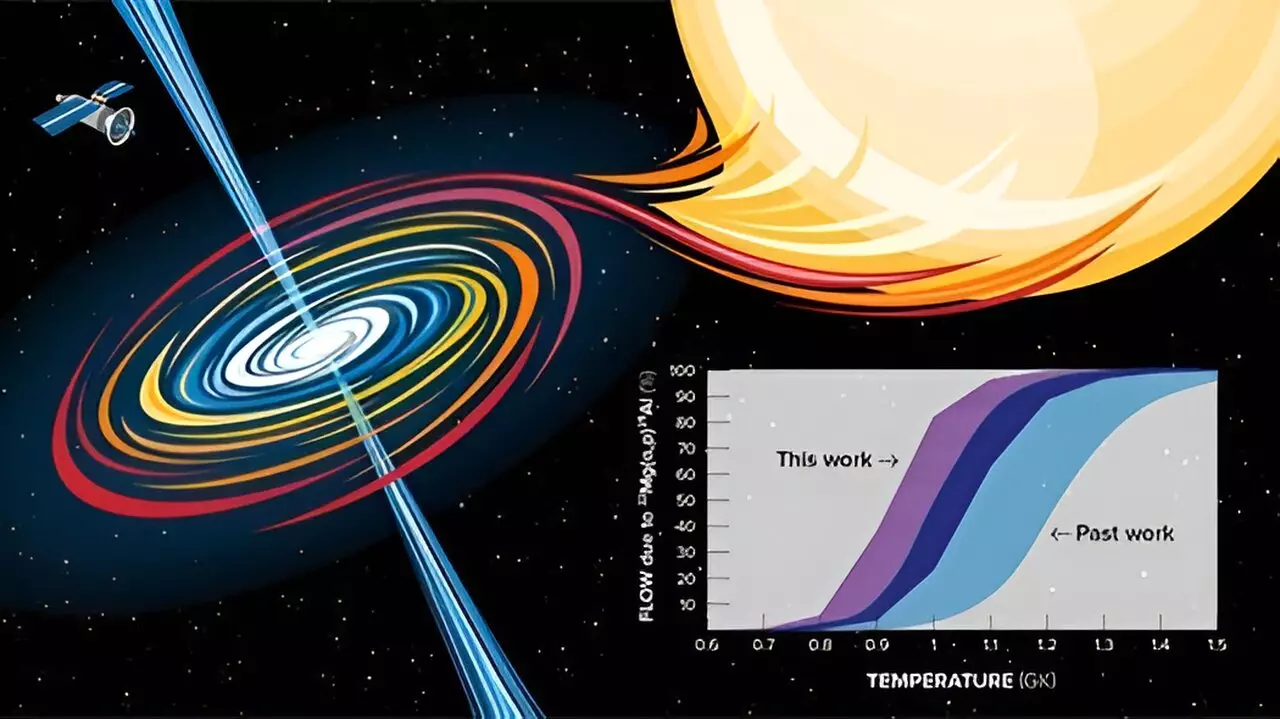X-ray bursts (XRBs) are powerful explosions that take place on the surface of a neutron star when it absorbs material from a companion star. These explosions are fueled by a series of reactions involving unstable nuclei that rapidly capture protons. The rate of these reactions, including the 22Mg(α,p)25Al reaction, is essential in informing models of XRBs and understanding the mechanisms behind these explosions.
A recent study published in Physical Review Letters focused on the investigation of the 22Mg(α,p)25Al reaction. The researchers found that the rate of this reaction is four times higher than previously measured. This new measurement sheds light on the synthesis of heavier elements in XRBs and suggests that the 22Mg waiting point may be bypassed by this reaction, leading to a more efficient nucleosynthesis process.
To measure the 22Mg(α,p)25Al reaction, scientists utilized the Argonne Tandem Linac Accelerator System (ATLAS) at Argonne National Laboratory. By employing inverse kinematics and developing an in-flight radioactive beam with the ATLAS in-flight system, researchers were able to recreate conditions relevant to XRBs. The experiment provided a new direct measurement of the angle and energy-integrated cross-section of the reaction, revealing a higher probability of occurrence and a lower temperature threshold than previously believed.
The findings of this study offer valuable insights into the nucleosynthesis reaction flow through the 22Mg waiting point in XRBs. By determining the rates of crucial reactions, such as the 22Mg(α,p)25Al reaction, scientists can improve their understanding of XRBs and the role of unstable nuclei in powering these explosive events. The higher reaction rate observed in this study suggests a more efficient process of generating heavy chemical elements in XRBs, emphasizing the importance of accurate reaction rate measurements.
The investigation of the 22Mg(α,p)25Al reaction provides crucial information for enhancing our knowledge of X-ray bursts and the nuclear reactions that drive these extraordinary phenomena. By utilizing advanced experimental techniques and innovative methodologies, researchers have made significant strides in understanding the underlying physics of XRBs and the nucleosynthesis processes involved. The results of this study contribute to a deeper comprehension of XRB models and the intricate mechanisms that govern these explosive events.


Leave a Reply